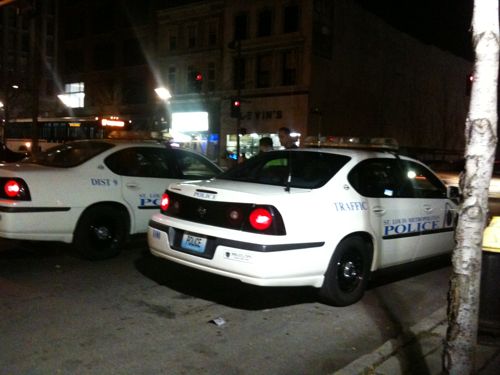St. Louis Natives vs. Newbies

Last week I posted the following as my status on Facebook:
“I’ve got a couple of friends who are new to St. Louis. Ray & John arrived about the same time, one from SF, one from NYC. The other night at The Royale John was talking about how great the street grid is here! It is just so nice talking to non-natives because they tend to “get it” more than those born here.”
In a short amount of time a heated discussion broke out among my friends, getting nearly 50 comments very quickly. My original point that those not from here don’t “get it” like those that move here as adults got lost in a debate about St. Louis vs. Kansas City.
Over the weekend a friend told me of a woman from West County that was certain she’d be shot and killed driving to the federal building downtown. In law enforcement, she had a weapon and was planning to wear Kevlar. She doesn’t like going east of Lindbergh Blvd. Amazing people think like this!?!
Those new to St. Louis, especially those from more urban areas, seek out the urban areas of St. Louis whereas suburbanites often, but not always, fear urban areas. I’m dumbfounded each time I hear stories of people my age living in the region who are afraid to enter the city limits. So I often seek out those who move here from outside the region because it is all new to them. Â I get to share my favorite restaurants & pubs, talking about architecture, the street grid — the raw potential.
My two new friends came here for work. Â Had they found work in other cities they wouldn’t be here. Â But they are quick learners, getting to know our people and institutions better than many who have lived here for years.
I know many natives, of course, who get it, who seek out urbanity rather than fear it. Â I love my conversations with them as well but the thrill of introducing a newbie to gems in St. Louis is such fun. Â I want them to tell their friends on the coasts of the potential here, the friendly people, the inexpensive cost of living, etc. Â Each one needs to get several friends to visit with one deciding to move here. Â Eventually it will snowball. Â 100,000 new residents from each coast would do the trick.
The ratio of natives to newbies would shift and so would the political winds. Sure, it will take a while, but I’m not going anywhere.
– Steve Patterson



